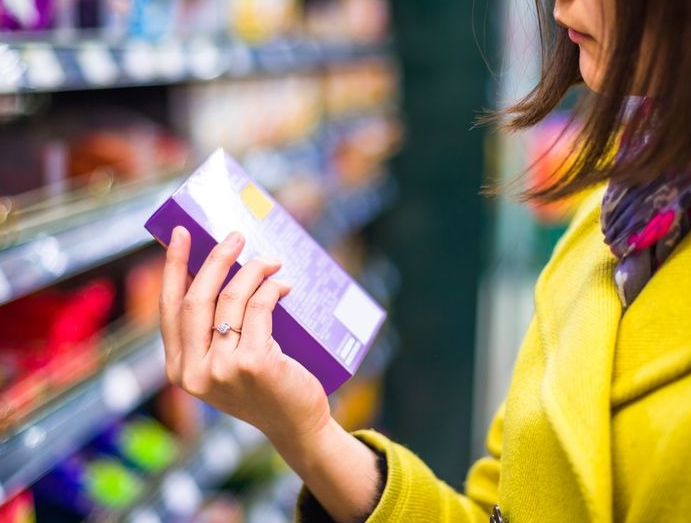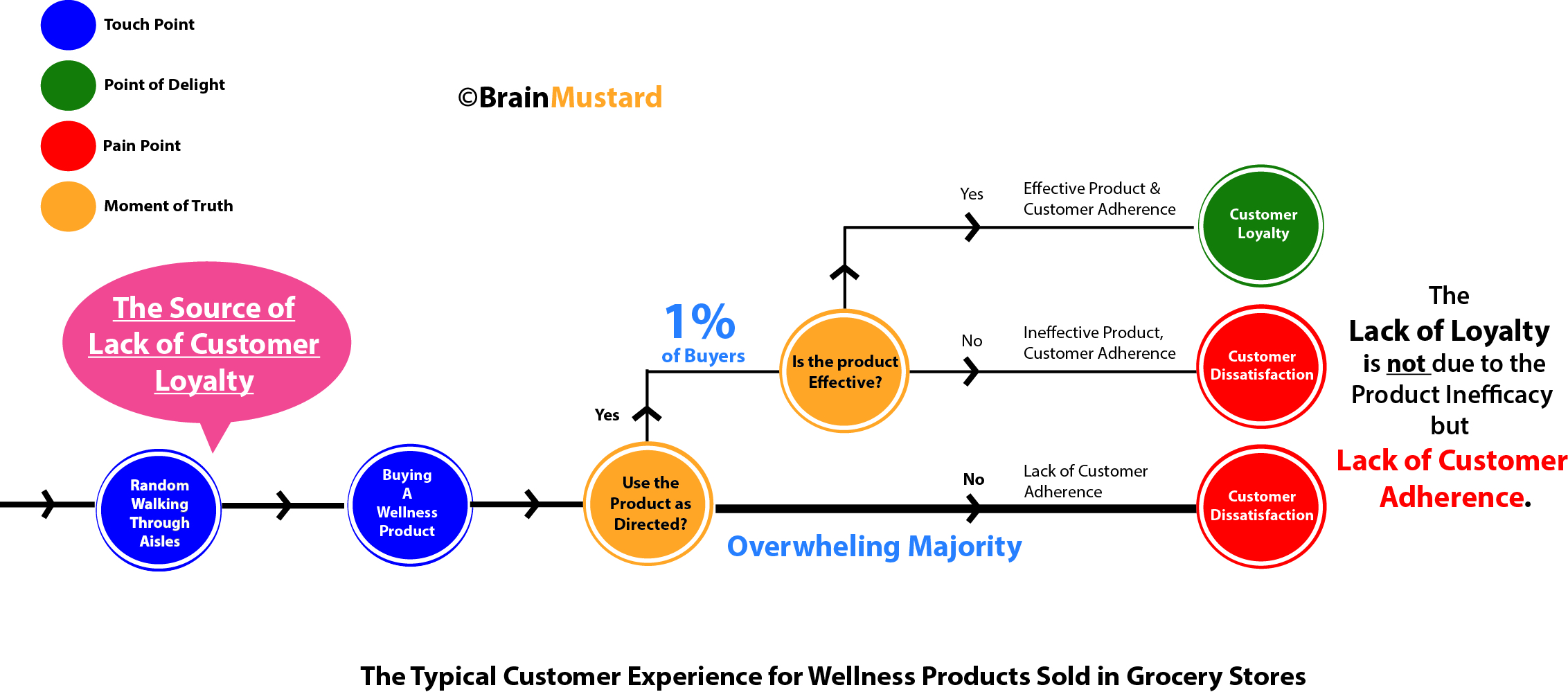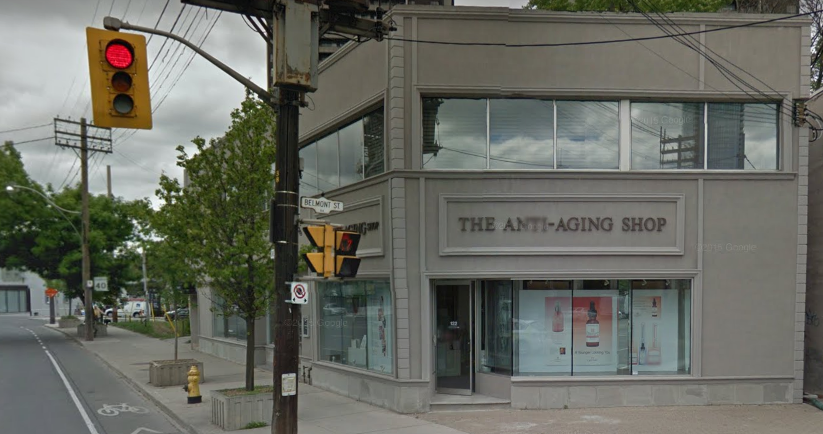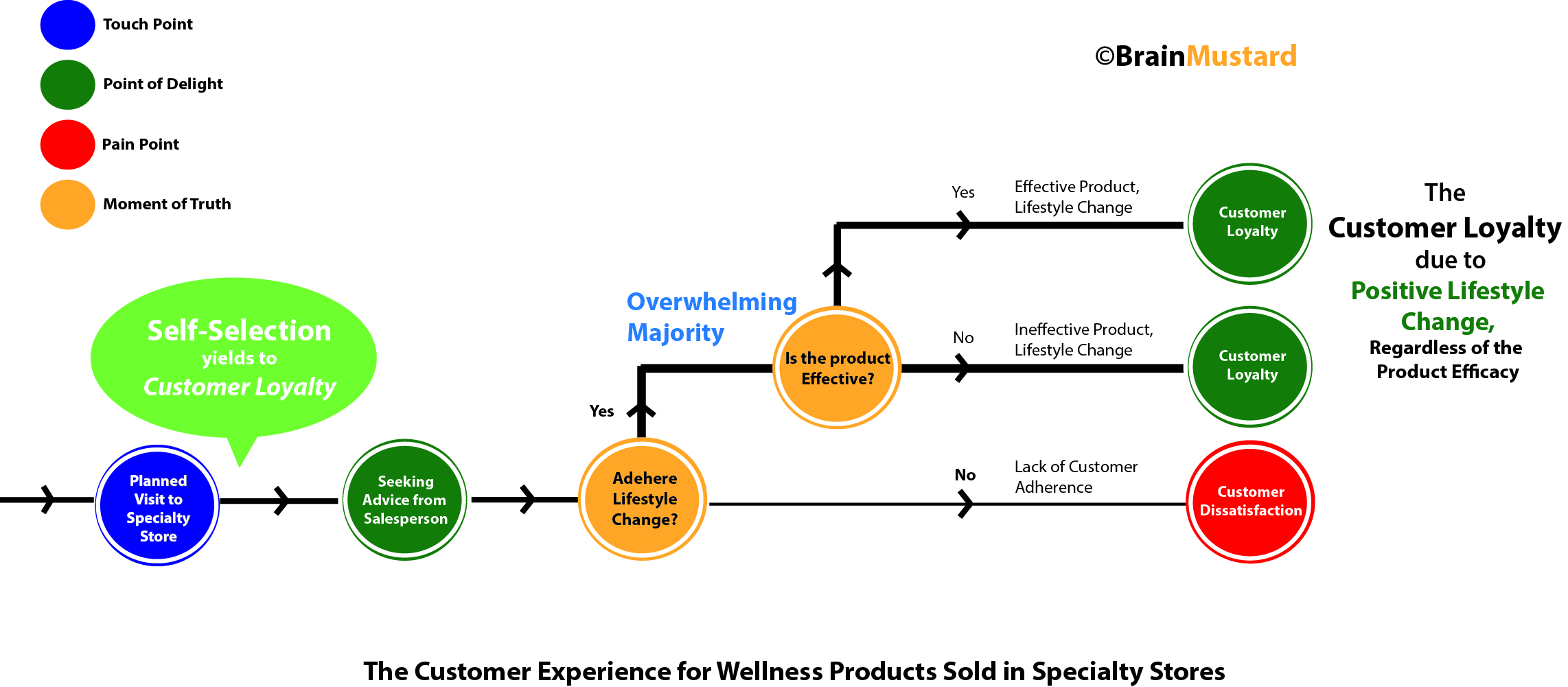Secret Sauce of Successful Specialty Wellness Stores
BrainMustard Customer Experience Design Series
About this Article
The Customer Experience Series by BrainMustard are based on the customer experience maps and social influence graphs built from scanning and analyzing millions of contents from the Internet chatter.
These models and maps offer revealing and unexpected consumer insights to formulate new initiatives to increase sales. Check out our success stories at http://www.BrainMustard.com
Got a question?
- 10 Alcorn Ave. / #204 / Toronto / Canada
- 416-556-3909
- Contact@BrainMustard.com
Tweet
Secret Sauce of Successful Specialty Wellness Stores

Figure 1: Wellness and health products sold in grocery stores and supermarkets suffer from epidemic lack of customer loyalty.
Walking down the aisles of your local supermarket, you sift the shelves of health and wellness products a bit until you find a box featuring a beautiful and happy couple with flawless physiques and sun tans enjoying a run along an ocean shore and written across it in gold letters that you will ‘lose weight fast and easy’. These products are engineered to demand little or no sacrifice from the consumers. And “easy” leads you to believe it is the “right” choice. And “Easy” is the reason why the experience of consumers of these products consistently ends with utter disappointment.
The marketers know that consumers seek “convenience”. Convenience seeking behavior is so prevalent that the marketers tend to ignore the main reason behind the purchase: efficacy. And efficacy sometimes might be at the expense of convenience. Unfortunately, convenience always take precedence. In the case of weight loss programs, the consumers not only do not alter their failing lifestyle but they also guiltlessly indulge in unhealthy desserts as a reward for taking a few diet pills. That’s how, regardless of their success during clinical trials, the diet products render themselves ineffective.

Figure 2: The CX snippet depicting the customer experience for shopping wellness products in grocery stores. Counter to what the user reviews and focus groups suggest, the lack of customer loyalty, largely, is not due to inefficacy of the product. Instead, the flawed design of customer experience would lead to lack of product adherence, and subsequently "percieved" product ineffecicacy.
So if the problem is “too much convenience”, it begs to ask whether “without convenience” one would ever succeed in business. Would consumers give your product a chance and try it once? As counter-intuitive it might be, the consumers not only will try your product, but they will also stick around loyally.

Figure 3: Wellness and health products sold in specialty wellness stores enjoy much higher customer loyalty.
This notion can be observed in many wellness specialty and anti-aging stores mushrooming in posh neighborhoods dominated by the boomers in major cities like NYC, Toronto, and Los Angeles. These stores usually sell exclusively a handful of products such as Celex-C, long known for featuring actress Dame Joan Collins in their commercials.
Unlike diet pills picked up from the shelves of grocery stores, these drugs are sold only after “consulting” (interacting) with a “specialist” (salesperson), whose job is not to sell you anything. By making the trip to these stores, and setting yourself up for excruciatingly high prices and serious commitments, you have already ensured him that you are sold (known as embedded self-selection mechanism).

Figure 4: The CX snippet depicting the customer experience for shopping wellness products in specialty wellness stores. The self-selection mechanism embedded in the customer experience journey would allow customers that are inherently serious and willing to commit to a lifestyle change and incorporate the product within the new lifestyle. In other words, the source of customer loyalty is attracting loyal customers at the begining of the journey.
Instead, he wants to ensure that the customer is committed to making the lifestyle changes that will meet the intended expectation, or otherwise, he would discourage the customer from purchasing the product.The required changes are drastic. They include regular skin treatments in well-known spas, wearing protection against sunlight, taking necessary vitamins, and following a healthy diet. This screening process allows the store to offers its magic only to those who are willing to commit and thus engaging the customer in a self-selection mechanism. One might wonder whether their anti-aging supplements have any impact on rejuvenation process considering the drastic changes the consumers have already made in their lifestyle. That is irrelevant. In the consumer’s eyes, these anti-aging stores have provided solid customer experience by providing the solution to the aging problem no matter how inconvenient it is.
Next time, when you are thinking about enhancing your customer experience, think about the embedding self-selection mechanism in the customer journey to maximize customer experience and ultimately reap the rewards of customer loyalty.
Tweet
Looking for similar articles from BrainMustard? Click Here
Copyright © BrainMustard